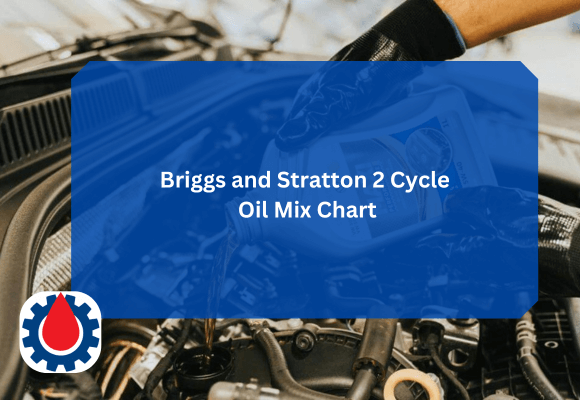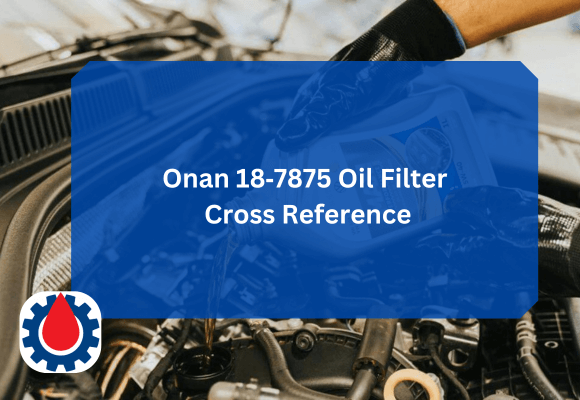To understand how these systems operate, engineers and technicians rely on hydraulic symbols that represent various components in a schematic diagram. These symbols are standardized by ISO 1219 and ANSI standards, ensuring universal understanding and communication.
In this article, we’ll explore the hydraulic symbols chart, explaining the most common symbols used in hydraulic circuit diagrams and their corresponding meanings.
Hydraulic Symbols Chart
| Component Category | Symbol Name | Symbol | Meaning / Function |
|---|---|---|---|
| Power Source | Hydraulic Pump (Fixed Displacement, Unidirectional) | ⭕➡️ | Converts mechanical energy into hydraulic energy with a constant flow rate. |
| Hydraulic Pump (Fixed Displacement, Bidirectional) | ⭕↔ | Reversible fixed displacement pump. | |
| Hydraulic Pump (Variable Displacement, Unidirectional) | ⭕➜ | Provides variable flow rate depending on system demand (diagonal arrow indicates adjustability). | |
| Hydraulic Pump (Variable Displacement, Bidirectional) | ⭕↔ with diagonal arrow | Reversible with adjustable flow. | |
| Pressure-Compensated Pump | ⭕➡️ with spring | Maintains set pressure by varying displacement. | |
| Hydraulic Motor (Fixed Displacement, Unidirectional) | ⭕⬅️ | Converts hydraulic energy into mechanical energy (arrow into circle). | |
| Hydraulic Motor (Fixed Displacement, Bidirectional) | ⭕↔ | Reversible fixed motor. | |
| Hydraulic Motor (Variable Displacement) | ⭕⬅️ with diagonal arrow | Adjustable speed/torque motor. | |
| Electric Motor | ⭕M | Drives the hydraulic pump. | |
| Internal Combustion Engine | ⭕ with jagged border | Diesel/gas engine driving pump. | |
| Fluid Reservoirs | Hydraulic Tank (Ventilated / Open) | ▭/ | Stores fluid, open to atmosphere (vented). |
| Hydraulic Tank (Pressurized) | ▭↑ | Stores fluid under pressure (sealed). | |
| Reservoir with Suction Below Fluid Level | ▭ with line below fluid level | Prevents cavitation at pump inlet. | |
| Lines and Connections | Main Line (Flow/Pressure) | ———————— | Primary flow path. |
| Pilot Line | – – – – – – | Control signal line (hydraulic/pneumatic). | |
| Drain Line | — — — — | Returns excess/leakage fluid to tank. | |
| Exhaust Line (to Atmosphere) | …………… | Vented to atmosphere. | |
| Crossing Lines (Not Connected) | ╳ or ┼ | Lines cross but do not connect. | |
| Connected Lines (Junction) | • or ┬ / ┴ / ├ / ┤ | T, L, or cross connection. | |
| Flexible Line (Hose) | ~~~~~~~ | Flexible hose connection. | |
| Centerline (Enclosure/Assembly Outline) | -·-·-·-·- | Outline of component group. | |
| Rotary Coupling / Swivel | Circle with cross | Allows rotation while connected. | |
| Directional Control Valves (DCV) | 2/2 Way Valve (Normally Closed) | ⬜⬜ with cross in one | Two ports, two positions; blocks flow when de-energized. |
| 2/2 Way Valve (Normally Open) | ⬜⬜ with parallel lines | Allows flow when de-energized. | |
| 3/2 Way Valve (NC) | ⬜⬜⬜ →⛔← | Three ports, two positions (one closed); typically spring-return. | |
| 4/2 Way Valve | ⬜⬜⬜⬜ →↔← | Four ports, two positions. | |
| 4/3 Way Valve (Closed Center) | ⬜⬜⬜⬜⬜ →↔⛔← | Four ports, three positions; center blocks all ports. | |
| 4/3 Way Valve (Open Center) | ⬜⬜⬜⬜⬜ with cross in center | All ports connected in neutral (unloaded pump). | |
| 4/3 Way Valve (Float Center) | ⬜⬜⬜⬜⬜ with T to tank in center | Cylinder floats in neutral (motor spool). | |
| Proportional Directional Valve | Box with arrow + solenoid | Infinitely variable flow/position control. | |
| Infinite Positioning | Continuous arrow (no boxes) | Proportional or servo control. | |
| Valve Operators | Manual (Lever) | ⬒ or hand symbol | Hand-operated actuation. |
| Solenoid | ▭ with coil | Electric actuation. | |
| Pilot Pressure (Hydraulic) | Arrow into box | Pressure-actuated shift. | |
| Pilot Pressure (Pneumatic) | Dotted arrow into box | Air pilot actuation. | |
| Spring Return | ⥯ or zigzag | Returns valve to default position. | |
| Detent | Small triangle | Mechanically holds position. | |
| Roller / Cam | Circle with line | Cam or limit switch actuation. | |
| Manual Override | Small lever on solenoid | Emergency manual operation. | |
| Locking Device | Padlock symbol | Prevents unauthorized operation. | |
| Pressure Control Valves | Relief Valve | ➡️🌀→🛢️ | Limits system pressure; opens to tank at set pressure. |
| Sequence Valve | ➡️🌀→◉ | Activates secondary circuit after set pressure reached. | |
| Pressure Reducing Valve | ➡️⤵️ | Maintains constant lower pressure in branch circuit. | |
| Unloading Valve | Relief with remote pilot | Dumps pump flow to tank at low pressure when signaled. | |
| Counterbalance Valve | ➡️🔁🛢️ | Holds suspended load; allows controlled descent. | |
| Brake Valve | Counterbalance variant | Controls overrunning loads (e.g., winch). | |
| Flow Control Valves | Fixed Orifice / Throttle | ➡️◍➡️ | Restricts flow at constant rate. |
| Adjustable Flow Control / Needle Valve | ➡️◉↔ | Manually adjustable restriction; precise metering. | |
| Pressure Compensated Flow Control | ➡️◉↔🌀 | Maintains constant flow regardless of pressure/load. | |
| Priority Flow Control | Divider with spring | Ensures primary circuit gets flow first. | |
| Deceleration Valve | Throttle with check | Slows actuator at end of stroke. | |
| Check Valves | Check Valve | ➡️🔘 | Allows flow in one direction only; blocks reverse. |
| Pilot-to-Open Check | Check with pilot line | Unlocked by pilot pressure (for holding circuits). | |
| Pilot-to-Close Check | Check with opposing pilot | Blocks flow when pilot applied. | |
| Shuttle Valve | Two inlets → ball → one outlet | Selects higher of two pressures. | |
| Actuators | Single-Acting Cylinder (Spring Return) | ⬜—◉⇠ | Extends with pressure, returns by spring. |
| Double-Acting Cylinder | ⇢◉⇠ | Power extension and retraction. | |
| Double-Acting Double-Rod Cylinder | ⇢◉—◉⇠ | Equal displacement both directions. | |
| Telescopic Cylinder | Nested ▭ with rod | Multi-stage extension. | |
| Cushioned Cylinder | ▭—◉—▭ with triangle | Decelerates at stroke end. | |
| Rotary Actuator | 🔄 | Converts fluid energy into rotary motion. | |
| Accumulators | Bladder Accumulator | ◉∩◉ | Stores energy via gas compression (flexible bladder). |
| Piston Accumulator | ◉— —◉ | Piston separates gas and fluid. | |
| Spring-Loaded Accumulator | ⭕ with spring | Less common; mechanical energy storage. | |
| Weight-Loaded Accumulator | ⭕ with weight | Provides constant pressure (hydropneumatic). | |
| Filters and Conditioners | Hydraulic Filter | ▭╳▭ | Removes fine contaminants. |
| Strainer | ▭#▭ | Coarse filter for suction lines. | |
| Water Trap / Separator | Filter with drain | Removes water from fluid. | |
| Heat Exchanger (Cooler) | ≡⇄≡ with wavy arrow out | Removes heat from fluid. | |
| Heat Exchanger (Heater) | ≡⇄≡ with wavy arrow in | Adds heat to fluid. | |
| Lubricator | Oil drop into line | Injects lubricant into air (pneumatic systems). | |
| Silencer / Muffler | Box with cone | Reduces exhaust noise. | |
| Measurement & Indicators | Pressure Gauge | ⭕⚙️ | Measures hydraulic pressure. |
| Flow Meter | ⭕Q | Measures fluid flow rate. | |
| Temperature Gauge | ⭕ with thermometer | Measures fluid temperature. | |
| Level Indicator | ▭ with float | Shows fluid level in reservoir. | |
| Miscellaneous Symbols | Vent (to Atmosphere) | Arrow out with cross | Exhaust port. |
| Quick Disconnect Coupling (Without Check) | ◉◉ | Allows easy line connection/disconnection (open). | |
| Quick Disconnect (With Check) | ◉◉ with check | Self-sealing; prevents fluid loss. |
Related Hydraulic Oil vs Engine Oil(Complete Side by Side Differences)
How to Read Hydraulic Symbols
Reading hydraulic schematics requires understanding the flow direction and positioning of components. Each valve or actuator shows how fluid moves through the system depending on the state or position.
Arrows indicate the direction of fluid flow, while springs or dashed lines often indicate control mechanisms.
For example, in a 4/3 directional control valve, the central square represents the valve’s neutral position, while the side squares show how flow occurs when actuated. Similarly, the check valve symbol ensures fluid moves in only one direction, protecting components from reverse pressure.
Related ATF Viscosity Chart(For ALL Types)
Importance of Hydraulic Symbols
Hydraulic symbols serve as the language of fluid power systems. Their importance includes:
- Simplified Communication: Engineers and technicians can easily interpret complex systems using standard symbols.
- Efficient Troubleshooting: Symbols help identify problem areas in hydraulic circuits quickly.
- Design Accuracy: Ensures that components are correctly placed and sized in schematics.
- Safety and Maintenance: Understanding symbols reduces the risk of errors that may cause equipment failure.
Related ASRC Transmission Fluid Compatibility Chart(For All Brands)
Final words
Hydraulic symbols are the foundation of any fluid power schematic. They allow designers, engineers, and maintenance personnel to communicate system design clearly and universally.
Whether you’re dealing with pumps, actuators, valves, or reservoirs, recognizing these symbols helps ensure accurate diagnostics, system efficiency, and safe operation.




